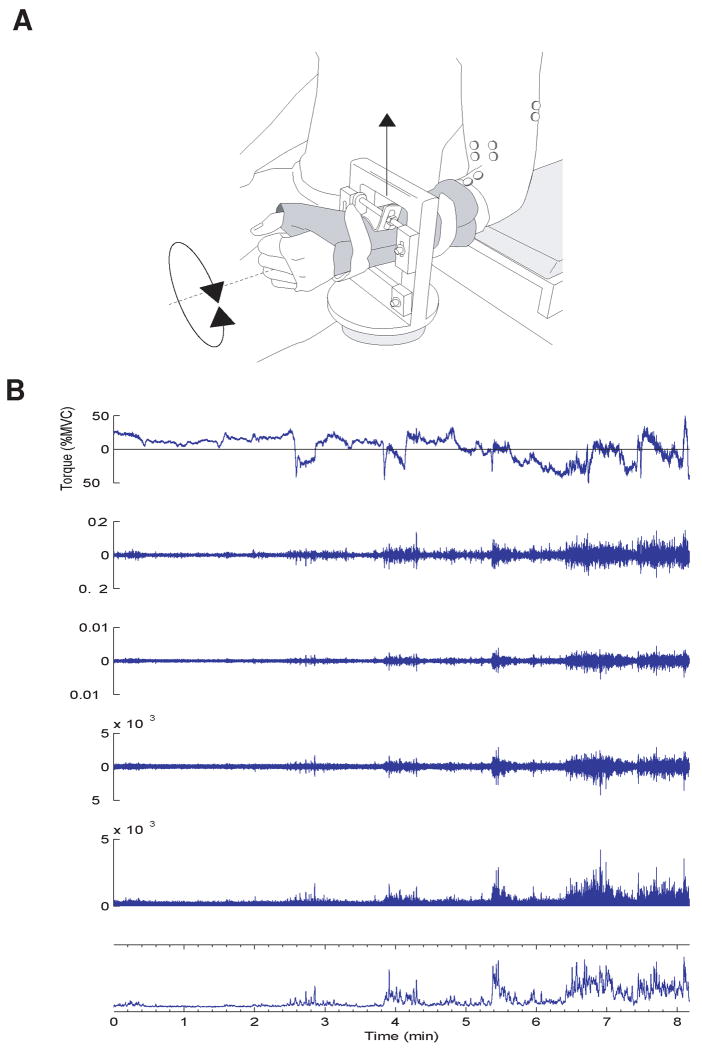Figure 1.
Experimental arrangement and signal conditioning. (A) Subjects were seated in an adjustable chair with the left upper arm vertical and the lower arm horizontal. The hand and forearm were placed in a modified wrist-hand-thumb orthosis. The task involved generating an isometric flexion force with the arm. (B) To examine the association between the changes in force and torque, the signals were high-pass filtered at 1 Hz (second trace), differentiated (third trace), high-pass filtered at 10 Hz (fourth trace), rectified (fifth trace), and low-pass filtered at 1Hz (bottom trace). Similar conditioning was applied to the EMG signals to compare changes in amplitude.

